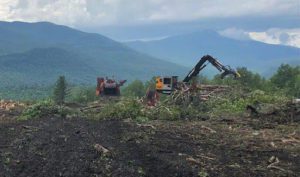Timber harvesting services use a combination of extraction and felling equipment to ensure a successful harvest. Every system must have a defined mechanism for felling and removing felled trees to the sawmill. Successful log reflects the right use of timber harvesting methods, equipment, and a local operation.
Read this guide if you’re wondering what type of timber harvesting methods a skilled service employs. We have curated this guide to list all timber harvesting methods and their benefits and limitations.
Things to Consider
Any timber harvesting method should be appropriate to the landowner’s site and objectives. Here’s what to consider:
- Financial returns such as cost, return on investment, and impact of different methods on income generation.
- The season can impact equipment choice. For instance, winter is suitable for any timber harvesting method, but fall or summer may limit the use of certain equipment; hence, timber harvesting methods on wet, soiled sites.
- Ground conditions such as steep slopes, wet sites, or rocky terrain can influence the use of equipment.
- The harvest area size, value, size of timber, and tree density also influence the practicality of a method used.
- Quantity and quality of timber determine the feasibility of an equipment and harvesting method.
- Landings, skid trails, and truck road layouts also affect the efficiency of harvesting methods.
- The skills of a logger also play an important role in ensuring the success of the method and equipment chosen.
- Environmental sensitivity can also dictate the type of harvesting system a logger will choose.
- Safety and security are integral to timber harvesting decisions.
 Timber Harvesting System
Timber Harvesting System
Following are common timber harvesting systems that a timber harvesting service will use:
Conventional Logging
The conventional logging method uses a cable skidder and a chainsaw. It’s further subdivided into the following methods:
- Felling System: The chainsaw is the commonly used conventional method for manual felling. A skilled operator can directionally fell trees. A chainsaw operator should be trained to safely use and maintain the equipment for the safe felling of trees.
- Extraction System: A cable skidder operator uses chokers, winch, and cable to collect and drag a load to pull the cable to trees instead of driving the machine to them. The extraction system allows flexibility on uneven land. The operator must attach trees to the cable so the winch can pull them butt first and reel the cable over an arch.
Mechanized Logging
Mechanized logging uses a grapple skidder, feller-buncher, and other auxiliary equipment for timber harvesting. Following are its felling and extraction systems:
- Feller-Bunchers: A harvester or feller-buncher can be any machine that fell, collects, and piles trees. The machine reaches the tree or drives to its base to sever the tree. Mechanized operators use whole-tree operations to remove entire trees from the land using auxiliary equipment such as a delimber, chipper, loader, and slasher.
- Extraction System-Grapple Skidder: A grapple skidder holds, drags, and uses a grapple to load a log or tree. The grapple drags the harvested tree to the landing, so the operator doesn’t need to get out of the machine to improve efficiency or assemble a log load.
- Chipper: A Chipper convertsw unusable material and slash into woodchips, making maximum use of timber.
- Slasher: this is used to delimb, or “buck,” the harvest trees in order to process them quickly and easily.
Cut-To-Length System
This method involves mechanized logging and uses a forwarder and processor combination:
- Felling System-Processor: A rubber-tired or tracked machine with a computerized head is used to buck, fell, and delimb tree stumps. It combines a processor with a forwarder to be used on sensitive sites.
- Extraction System-Forwarder: A forwarder is a self-loading machine that can carry parts or an entire tree. It’s also suitable for highly sensitive sites.
Timber Harvesting Methods
The following are commonly used types of timber harvesting methods:
Selective Harvesting
The most misunderstood method, selective harvesting, can be complex. This method involves removing higher-risk trees to leave room for residual trees with high potential. When tree stands grow thicker and denser, it risks the overall health of a forest. Therefore, the foresters use this method to allow the light to enter the partially-opened canopy, accelerate tree vigor and health individually, and allow seeding.
Clearcutting Method
Clearcutting is a suitable solution for forests with sprouts or seedlings that require full exposure to sunlight. Buds and seeds respond well to the warmer forest ground. The abundant light expedites the growth of the trees.
Shelterwood Method
This method lies between selective and clearcut methods. The loggers or foresters remove the parent forest in several stages to establish optimum conditions for regeneration. They also nurse the regrowth to harvest the remaining parent forest.
If you’re ready to harvest your timber, contact us at William A. Day Jr. & Sons for expert help. We’re a team of loggers providing timber harvesting services in Maine and New Hampshire to help landowners plan and execute a successful harvest that meets their objectives. Reach out to us today for more information.
